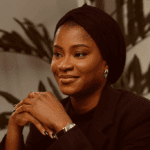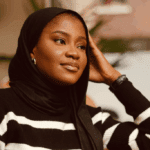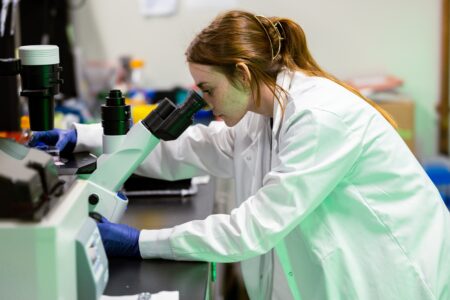Originally from Bengaluru, India, Mukund Balasubramanian gained his first exposure to photonics during his undergraduate studies. He joined a special topics course taught by Professor Kaustav Bhowmick, who also became his first mentor in photonics research. The class opened his eyes to how electronics and photonics could be codesigned and integrated, not just for advances in communication and sensing, but for emerging technologies like quantum and optical computing.
“This led me to apply to The College of Optics and Photonics (CREOL) at the University of Central Florida, which is a renowned research institution,” he says.
CREOL has become synonymous with excellence in optics and photonics. It ranks among the top three public universities for optics in the US and among the top seven overall, with Harvard, MIT, Stanford, and Caltech as company. Established in 1987 as a research centre, it became a full-fledged college in 2004 — the first graduate-level college in the US devoted entirely to optics and photonics. It now offers master’s and PhD programmes, along with an undergraduate degree in Photonic Science and Engineering, launched in 2013 in collaboration with UCF’s College of Engineering and Computer Science.

CREOL’s faculty and graduate students conduct wide-ranging research in optics and photonics, from fundamental physics to devices and systems. Source: University of Central Florida
Part of what makes CREOL so unique is its location. Situated near Research Parkway and Florida’s Space Coast, it offers students strong industry links and access to real-world projects. This environment has been crucial for Balasubramanian’s research, which focuses on optical frequency combs — highly precise tools used in sensing, biomedical imaging, and quantum optical communication. He is working on improving the quality of these combs and building advanced systems using fibre optics in the lab.
Balasubramanian’s work demands constant creativity and adaptability. “My research requires me to think outside the box to develop new ideas and ways to approach any problems that I might face,” he says.
This process is strengthened by the interdisciplinary nature of the programme. “I can only envision small, but crucial enhancements to my design or experimentation when I discuss it with friends and colleagues who specialise in other disciplines and have a different perspective on the problems that I face,” he says.
That collaborative spirit also drives the work of Kang-Min Lee, another PhD student at CREOL. He’s exploring how structured light, especially vortex beams, behaves when scattered by various complex environments. His research focuses on statistical optics, aiming to extract useful information from these perturbed signals. This technology has potential applications in imaging hidden objects, detecting positions in challenging conditions, and enhancing optical communications. Lee’s work takes place in a lab led by Dr. Aristide Dogariu.
“I believe our lab is one of the best places for analysing such perturbed signals under Dr. Dogariu’s supervision,” he says.
Lee’s research fits into a much broader landscape of innovation happening at CREOL. Faculty and students across the college are engaged in a wide range of topics, from fundamental optical physics to the development of practical devices and complex systems. Areas of expertise span optical fibre fabrication, quantum information systems, integrated photonics, astrophotonics, ultrafast lasers, and displays for AR/VR. This diversity of research is supported by an academic community of 35 core faculty members, approximately 60 research scientists and postdoctoral researchers, and over 130 graduate students and 170 undergraduates.

The college has long promoted growth in optics and photonics, maintaining strong industry ties through its Industrial Affiliates Programme. Source: University of Central Florida
With a research ecosystem of this calibre, CREOL continues to make significant contributions to the field. Each year, faculty secure nearly US $20 million in research funding and publish around 200 papers, many of which appear in top-tier scientific journals.
For Lee, his CREOL journey has been transformative. With experience as an optical engineer in the industry, he was looking to strengthen his theoretical foundation. CREOL provided exactly that. “The curriculum offers a very solid foundation and is well-structured for developing in-depth optics knowledge,” he says. “Additionally, due to the excellent faculty, whenever I need guidance, it’s very convenient to reach out to professors for insights from deep perspectives, including philosophical approaches to research problems.”
Beyond academics, CREOL’s strong ties with industry provide students with a real sense of where their work’s reach. Its Industrial Affiliates Programme includes over 60 member companies, and the college has produced more than 400 patents and spun off 29 companies. Four of these startups are currently housed on campus through the UCF Photonics Incubator.
This close connection with industry has helped Lee better understand what companies are looking for and how his research might one day be applied. “This exposure helps me see how my fundamental research on optical sensing through obscurants could translate into practical solutions for real-world problems that industry is actively trying to solve,” he says.
Many CREOL graduates go on to work at some of the world’s top tech companies, including Apple, Microsoft, Google, and Meta. Lee hopes to follow a similar path. “During my experience at CREOL, I’m gaining in-depth knowledge and research experience that I’m confident will equip me well for industry challenges,” he says.
Learn more about CREOL, the College of Optics and Photonics.
Follow CREOL, the College of Optics and Photonics on Facebook, Instagram, LinkedIn, and YouTube.











